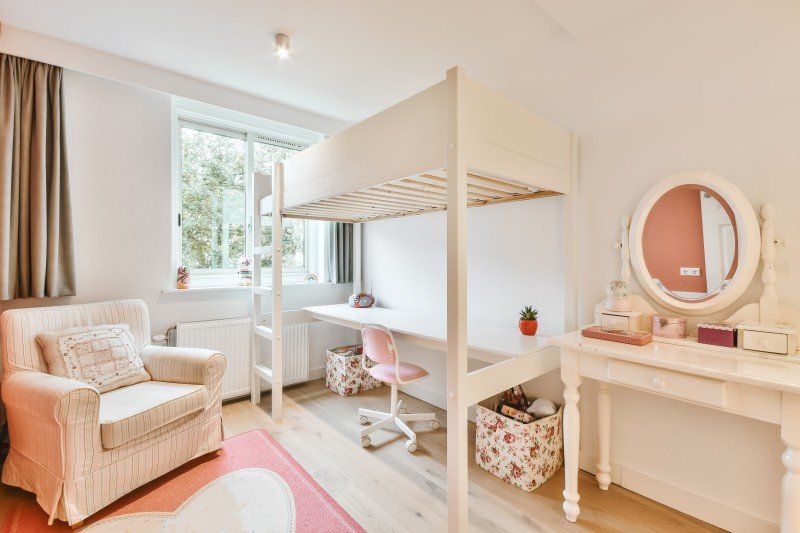Can Bunk Beds Children's Be The Next Supreme Ruler Of The World?
The Ultimate Guide to Bunk Beds for Children: Safety, Styles, and Benefits
When it comes to styling a kid's room, parents typically face the double obstacle of maximizing space while making sure comfort and performance. Bunk beds have emerged as a popular solution that addresses these requirements, offering not simply sleeping plans but also contributing to a space's aesthetic. In this detailed guide, we will explore different elements of kids's bunk beds, concentrating on their advantages, safety functions, styles, and factors to consider for moms and dads considering this purchase.
Table of Contents
- Advantages of Bunk Beds
- Security Features to Consider
- Kinds Of Bunk Beds
- Design and Style Options
- Upkeep Tips
- Regularly Asked Questions (FAQs)
1. Advantages of Bunk Beds
Bunk beds offer various benefits for children and their parents. Here are some crucial advantages:
Space-Efficiency: Bunk beds are an excellent service for smaller spaces. By stacking one bed on top of another, more flooring space is offered for play, storage, or research study locations.
Economical: When children share rooms, bunk beds can decrease the requirement for buying 2 separate beds, hence saving cash.
Promotes Social Interaction: Bunk beds can help brother or sisters or buddies bond by sharing a space, developing opportunities for social advancement.
Enjoyable Factor: The concept of sleeping “up high” includes a spirited element to bedtime, making the transition to sleeping alone easier for some kids.
Versatile Design: Bunk beds can be found in different styles, colors, and develops to match any space style, enabling personalization that shows the kid's personality.
2. Security Features to Consider
Security is paramount when it pertains to children's furnishings, particularly in the case of bunk beds. Here are some crucial security functions to assess:
Safety Feature
Description
Strong Construction
Frames made of strong wood or metal are chosen.
Guardrails
Ought to be at least 5 inches high and extend along both sides of the upper bunk.
Ladder Design
Guarantee ladders are safely attached and have non-slip steps.
Mattress Size & & Fit
Should fit comfortably within the frame to avoid spaces.
Weight Limit
Constantly abide by the maker's weight limitation recommendations.
3. Kinds Of Bunk Beds
Bunk beds come in several designs, catering to different requirements, choices, and space sizes. Here are some typical types:
Standard Bunk Bed: The most basic type, with one bed on top of another.
Loft Bed: Features a high upper bed with space below for a desk or play location.
Futon Bunk Bed: Combines a top bunk with a futon on the bottom, providing flexibility for seating and sleeping.
L-Shaped Bunk Bed: This style has the top bunk set at a perpendicular angle to the bottom, creating a small corner area.
Triple Bunk Bed: Accommodates three kids using stacked beds, suitable for large families or slumber parties.
4. Style and Style Options
When it concerns selecting a design for kids's bunk beds, the choices are practically limitless. Here are some popular styles:
Traditional Style: Often made of wood, these bunk beds include elaborate information and are ideal for traditional or rustic-themed rooms.
Modern Style: Characterized by tidy lines and minimalist styles, modern-day bunk beds can be made from metal or wood.
Themed Bunk Beds: Some brands use bunk beds formed like castles, automobiles, or playhouses, making bedtime less of a chore.
Convertible Bunk Beds: These can be separated into 2 specific beds, providing flexibility as kids grow.
Colorful Options: Bunk beds in vibrant colors can add a sense of joy and playfulness to any room.
5. Maintenance Tips
Maintaining a bunk bed is vital for durability and security. Here are some pointers:
Regular Inspections: Check for loose screws or bolts every few months and tighten them as required.
Cleaning up: Wipe down frames frequently to prevent dust accumulation; consider utilizing a vacuum for hard-to-reach areas.
Bed mattress Care: Rotate bed mattress routinely and use protective covers to extend their life.
View for Wear and Tear: Look for any signs of damage in the wood or metal and think about changing parts if needed.
Teach Kids Safety Rules: Encourage kids to use ladders correctly and guarantee they understand the security functions of their bed.
6. Regularly Asked Questions (FAQs)
Q1: What age is appropriate for oversleeping a top bunk?
A1: Typically, kids aged 6 and older are advised for upper bunk sleeping, as they have the essential motor abilities to climb up securely.
Q2: Do bunk beds come with a mattress?
A2: Most bunk beds are sold as frames only, so you will require to buy mattresses separately. Ensure that the bed mattress fits the frame comfortably.
Q3: Can bunk beds be separated later?
A3: Many styles allow conversion into two specific beds, providing flexibility for future needs.
Q4: How can I ensure my child's safety on a bunk bed?
A4: Comply with security standards and ensure guardrails, a sturdy frame, and a protected ladder remain in place.
Q5: Are there weight limitations on bunk beds?
A5: Yes, always check the manufacturer's requirements relating to weight limits to guarantee safety.
Bunk beds for children can serve numerous purposes while ensuring safety and design. With Bunk Beds Store and designs available on the market, parents can discover a system that not only maximizes bedroom space but likewise shows their kid's distinct tastes. Just like any furnishings, understanding safety functions, maintenance, and how they suit a kid's way of life will ensure that these beds stay a practical furnishings option for years to come.
Through cautious consideration and adherence to security guidelines, bunk beds can provide a long-lasting, enjoyable, and functional sleeping option that children enjoy.
